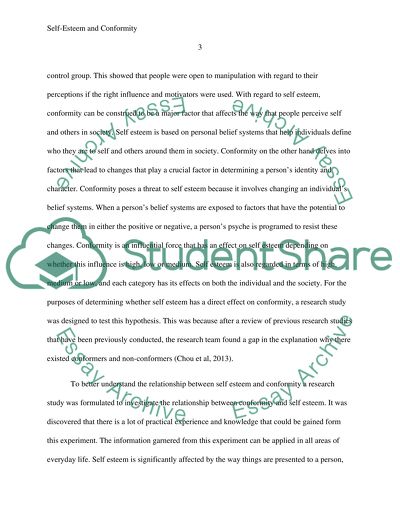Cite this document
(“Self-Esteem and Conformity Research Paper Example | Topics and Well Written Essays - 1750 words”, n.d.)
Self-Esteem and Conformity Research Paper Example | Topics and Well Written Essays - 1750 words. Retrieved from https://studentshare.org/psychology/1480400-self-esteem-and-conformity
Self-Esteem and Conformity Research Paper Example | Topics and Well Written Essays - 1750 words. Retrieved from https://studentshare.org/psychology/1480400-self-esteem-and-conformity
(Self-Esteem and Conformity Research Paper Example | Topics and Well Written Essays - 1750 Words)
Self-Esteem and Conformity Research Paper Example | Topics and Well Written Essays - 1750 Words. https://studentshare.org/psychology/1480400-self-esteem-and-conformity.
Self-Esteem and Conformity Research Paper Example | Topics and Well Written Essays - 1750 Words. https://studentshare.org/psychology/1480400-self-esteem-and-conformity.
“Self-Esteem and Conformity Research Paper Example | Topics and Well Written Essays - 1750 Words”, n.d. https://studentshare.org/psychology/1480400-self-esteem-and-conformity.


